I’ve liked watches since I was a child and received my first Casio digital as a gift for Christmas.
I got it on Christmas Eve and stayed up all night checking the time with the light function to see if it was time to get up and open presents. Maybe that association with the joy and anticipation of something special still draws me today. I’m also a big fan of movies and watched a lot of action-adventure films growing up. Watches always seemed to be an important piece of equipment for an action hero, whether it was Roger Moore (the Bond of my childhood) or Arnold Schwarzenegger in his latest shoot em’ up. Between fiction and reality, I became fascinated with dive watches. As I was watching James Bond wear his Seiko “Tuna” diver to diffuse an atomic bomb on the ocean floor, one of my high school buddies was also getting his dive certification and got a new Tag Heuer Aquaracer to celebrate his completion of the course. I was hooked.
I owned a few budget divers throughout high school and college. One that I wore a lot was the Casio “Arnie” which is an ana-digital dive watch similar to the legendary Seiko “Arnie.” When I graduated college and got my first teaching job, I started wanting a “proper” watch, whatever that meant. Something a little more grown-up but also something a respectable action hero would wear. It was the late 90s, and Luminox Navy Seal watches were popular. I had a friend who owned one, and I liked it. It had a military aesthetic, and much like my childhood Casio, I loved that it glowed in the dark with its tritium tubes. Priced around $200, it was the most I’d ever spent on a watch and felt luxurious to me on my modest teacher’s salary. I loved the watch, and it performed very well. In the early 2000s, the internet was still in its early days. It wasn’t long before I started searching for watches online. One day, I typed in “military dive watch” into a search engine. And I’ve been in the rabbit hole ever since.


I tend to approach collecting watches as a meandering journey rather than something with an ultimate objective or goal.
When I encounter watches that excite or inspire me, I start asking questions. Why do I like this? What is it about this I enjoy? Is it something I would like to own, or is it something I can just appreciate without needing to own it? I find this process helpful because I may realize what I’m enjoying or what I’m drawn to in a watch is a trait that is repetitive in my collection. I may realize, “Of course I like this. It’s a black-dial dive watch, and I have several of those.” So then I feel like I need another compelling reason why I would need to own it or if I would be willing to let something else go to have it.
If I decide I would like to add a watch to my collection, my questions become much more practical. Is it within my budget? Will I wear it? What purpose does it serve in my collection? I’ve been doing this long enough that I’ve learned a bit about myself and the process. Stretching my finances to buy a watch that’s not within my means has not been satisfying to me in the past. Nor has buying a watch that sits in the box and doesn’t get worn.
Another question that has become important to me recently is: do I want to support this brand? I don’t feel I can separate buying a particular watch from the brand’s practices and culture. I find that I enjoy my watches more when I resonate with the brand, their vision, and what they’re trying to do.
One that comes to mind is my Seiko 6138-0040 “Kakume” from 1976.
The watch features the legendary 6138 chronograph movement, a beautiful champagne dial, and square chronograph registers, leading to its nickname “Kakume,” which is “square eyes” in Japanese. I acquired the watch in a trade with my dear friend Christos, who is one of the founders of Rebar Milwaukee. He was one of the first watch enthusiasts/collectors that I ever met in real life and not just on the internet. I admired the diversity in his collection, his incredible photography, and his character as a person. He is someone that I instantly knew that I had a lot to learn from.
We share a passion for vintage Seiko, so when he acquired this one, he knew I would enjoy it. I was quite smitten and made it known every time we talked. Being a generous person, he offered to sell it to me. But with an impending move and a kid headed to college, the time wasn’t right. Eventually, I had the idea of a trade. I offered Christos my Seiko 6138 Bullhead Chrono in exchange for the Kakume. Thankfully, he agreed. I love the watch and the connection it represents. I still consider Christos a mentor in my life, and having the watch reminds me of him and all that he’s taught me.


I enjoy changing watches, and I rarely wear the same watch more than 2-3 days in a row.
I also feel it's important to wear the watches I receive for photos/reviews so that I can make informed statements about them. That makes it tough to have a true “daily driver.” However, this year, I started a new practice of only taking one watch with me when I travel. And my go-to watch for travel this year has been my Bell & Ross BR03 Matte Black Diver. It’s just so versatile and perfect for anything I normally do on vacation. I can wear it hiking on the trail or canoeing in a river and then wear it out to dinner that night. I also love that the watch is strangely discreet. The bold, square case is subdued by the matte black finish. Most people aren’t going to notice it. And when you’re traveling, that has its advantages.
This year, I’ve had the opportunity to see a few pieces from Serica on loan for photography.
Although the brand has been around since 2018, I hadn’t seen their watches in person. Sadly, I feel there is often a disconnect between what a brand says is the inspiration for its design and the final product. Serica is unique in that I didn’t have to read a website or vision statement to understand what the brand was trying to do. It was all right there on my wrist. I could see and feel what was important to them: a distinct design language and a precision tool of the highest quality. The lack of branding on the dial, crown, or case back sends a clear message that the brand wants to be known and recognized for the excellence of its product more than the font it chooses for its logo or the origin story on its website. To me, the brand shows true integrity by seeking to develop a reputation built on the quality of the product rather than the quality of the marketing or heritage. I also think they’re delivering exceptional value for what you get. I don’t see many other chronometer-certified watches in this price range. For those who haven’t seen a Serica in person, I recommend checking them out. I was so compelled by their 5303 diver that I wound up buying one.


My first suggestion would be to take it slow.
Remember that collections are built over time. It’s not a race. It can be easy to fall into a comparison trap when viewing online watch content or social media. Or even when attending a meetup or enthusiast event like Redbar. There can be a temptation to want to build a collection quickly to “fit in” or even try to impress others. Keep in mind that others with admirable collections most likely built them over many years. And that if someone makes you feel less than because you don’t own or enjoy a particular watch, they’re not worth your time anyway.
I also recommend knowing your budget and sticking to it. Ask yourself if your watch spending is in line with the rest of your finances. Are you maintaining your priorities or sacrificing other important financial goals? Wearing an expensive watch while driving a broken-down car with little in the bank just doesn’t make sense. Or overextending yourself by putting an expensive watch on a credit card. These things just add stress and make it hard to even enjoy owning the watch.
Lastly, when you decide to purchase a watch, let it be because you enjoy it and for no other reason. Too often, people buy a watch because of outside influence. Maybe a friend told them it was “good.” Or maybe they see a lot of people raving about it on social media. Over time, you may realize that even if a watch is “iconic” and boasts incredible “heritage,” it’s just not right for you. What matters most is if you enjoy it because it’s your wrist. So collect what makes you happy, and don’t concern yourself too much with what others think. Enjoy being at the beginning. It’s a great place to be!
I mainly try to be myself, share products that I enjoy, and present them with the highest quality images I can achieve.
Those may sound like simple goals, but they can be challenging in themselves. With so much great content on Instagram, it can be tempting to want to emulate someone else’s collection or photography style. I don’t mind being “influenced” by my peers. I often discover watches, products, and photo tips on the platform. I just have to keep myself in check. Certain brands and watches are popular in the community. And so are certain styles of photography. I want to stay true to my style and voice. I think that when I do that, it resonates with my audience.
And that is perhaps the greatest reward: making real connections with other enthusiasts. I’ve made great friends in real life as a result of my account. @pool952 and I met through the platform and had the opportunity to hang out when I visited London in 2022. He recently traveled to the US to spend a week with me here in the Midwest. It was so fun showing him around. Surprisingly, the trip had little to do with watches. We explored Chicago and then came back to Kansas to get out and experience the beauty of the Flint Hills and the Tallgrass Prairie Preserve.

One of the biggest challenges for me with a dedicated camera is seeing the shot through the viewfinder or the small LCD on the back of the camera.
A few years ago, my friends Jerry from Dryden Watch Co. and Steve from Raven Watches showed me how they used a large external monitor to compose and shoot their product photos. I was fortunate to have a 32” monitor in my basement that wasn’t in use, so I set that up in my home studio as my external monitor. It has been revolutionary for me. It allows me to compose a shot and “see” it before I release the shutter. If it’s a flat-lay shot, I can make fine adjustments to the elements in the shot and the lighting. And I can also review shots in a large format once I have released the shutter. Zooming in on a shot on a wide-screen TV helps me see problem areas I may not have noticed otherwise, such as reflections, dust, or other things in the image that weren’t wanted. It helps me ensure I have a raw image I’m satisfied with before I begin editing.


I enjoy using props, and they are typically things that I own and use
I think it’s nice to see a watch in context with other items. If there’s a story to these shots, it has something to do with the significance of the tools we rely on and carry with us each day. The watches I enjoy are often associated with adventure, so I may put them with a topo map, a notebook, and a pen to suggest someone charting out a course. Or if I’m highlighting a strap for a watch, I may incorporate tools for strap removal, like a spring bar tweezer tool. I find that consistency is important with the kind of props that you use. I don’t want them to appear like random items surrounding a watch but instead, like items that belong together for a purpose. I might group a watch, knife, and pen for an “everyday carry” shot. Or camera lenses and a map to evoke prepping for a photo shoot. I try to suggest something and let the viewer fill in the blanks. Flat-lay shots with props are one of my favorite shots to do. I hope my viewers enjoy seeing them half as much as I enjoy creating them.
Here are a few that come to mind:
Andrei is one of my favorite creators on Instagram. He composes elaborate scenes with watches, Legos, and mini figures. He tells visual stories that are compelling and fun. His compositions are incredible and varied, and the photo quality is immaculate. I very rarely put Legos in a shot, but he reminds me to be myself, have fun, and fully commit.
Ty is one of my oldest friends on the platform and one of the first watch enthusiasts I ever met in person. When I started following his account, he was a professional wedding photographer who shot watches as a hobby. He eventually transitioned to full-time watch photography as his career. His images are razor-sharp with pitch-perfect color. He is one of the most sought-after photographers because his photos present the watch in an elevated yet accurate way. The clarity of his images is breathtaking and that aspect is something I have aspired to incorporate into my photos.
Rob is probably best known for creating the illusion of floating watches as well as richly composed tabletop shots where the watch is propped at an angle with a reflection in the foreground. Contrary to @tyalexanderphotograhy, Rob creates soft bokeh in his images to highlight the depth of the scene and draw attention to the highly focused dial in the image. He has inspired me to try more bokeh shots, which people always seem to enjoy.
Michael sets the bar for lifestyle photography with his outdoor shots of himself out in the field. They appear very candid and natural as if someone else was taking photos while he was out enjoying a hike. Remarkably, he’s able to take these images himself using a remote shutter and his phone as a monitor. Maybe the greatest compliment to him is that it is very difficult to do this style of photography without mimicking him. I’ve been trying to do more lifestyle shots lately, and I most certainly look to his images for ideas.

I primarily used my iPhone for watch photography until about two years ago.
I found that I could produce enjoyable images for my audience and that the brands I worked with seemed satisfied with the results because I was getting strong engagement. However, I felt I had reached a plateau and would not be able to achieve the quality of images I was seeing from other professional photographers I admired. I wanted to stretch myself and maybe even produce images that clients would be willing to pay for. With the help of a good friend who happens to own this blog, I switched to a dedicated camera and set up my home studio.
Since that time, my account hasn’t grown significantly in terms of followers. However, I have noticed a strong reaction to the improved photo quality, both from my followers and from brands. I would say that the improved quality has opened doors for me to do more collaborations. And I’ve also been able to work with paying clients, producing images for their marketing needs.
I think this question has a lot to do with your goals. If you want to build an Instagram audience, I think that can easily be done with a phone camera. If you want to get paid by a brand for images of their product, you need to learn how to use a dedicated camera and also become proficient with editing software like Lightroom and Photoshop.
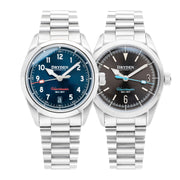
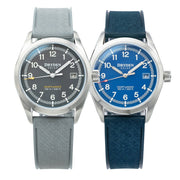
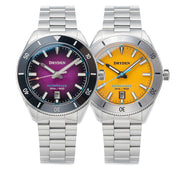
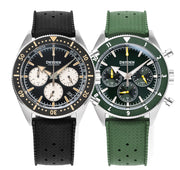
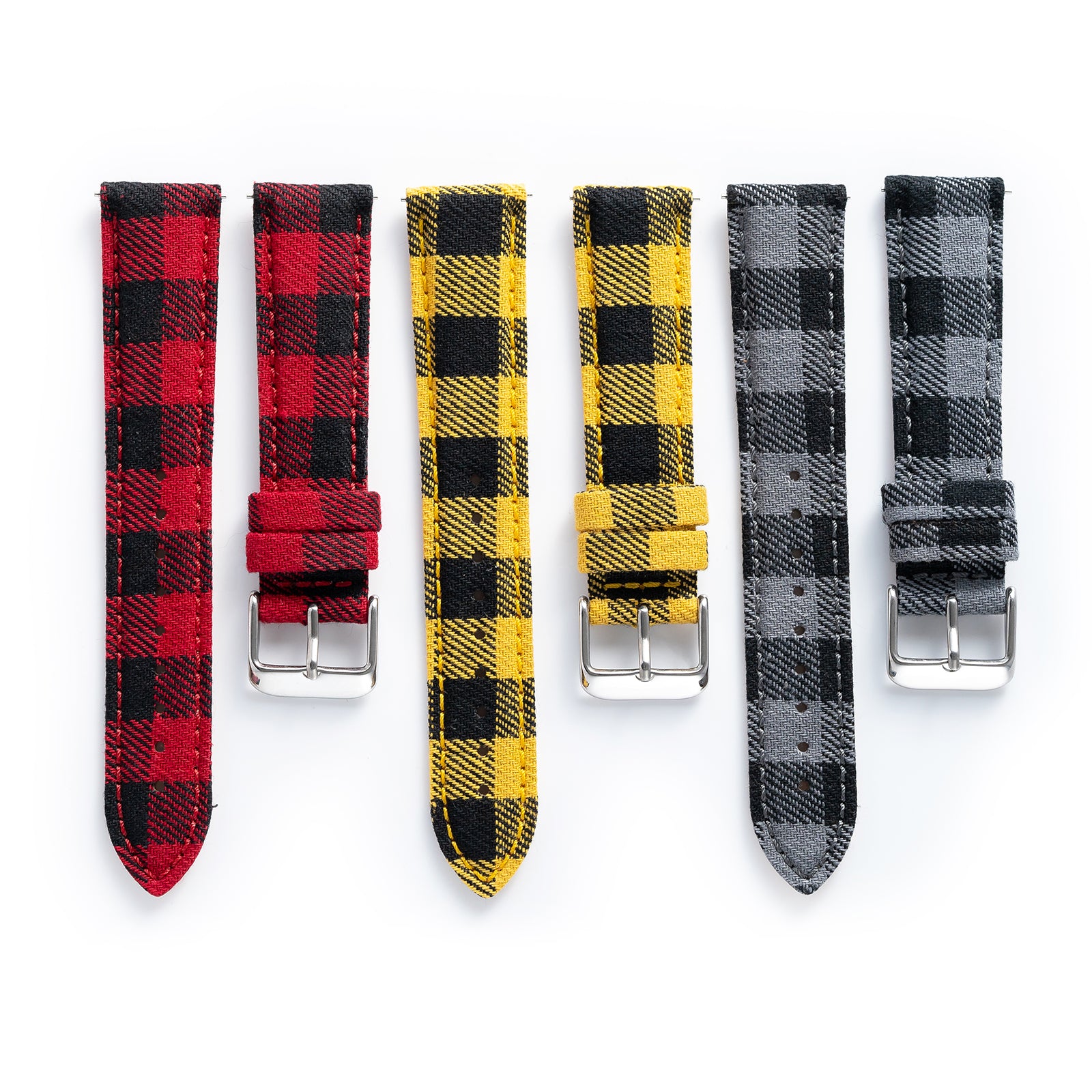
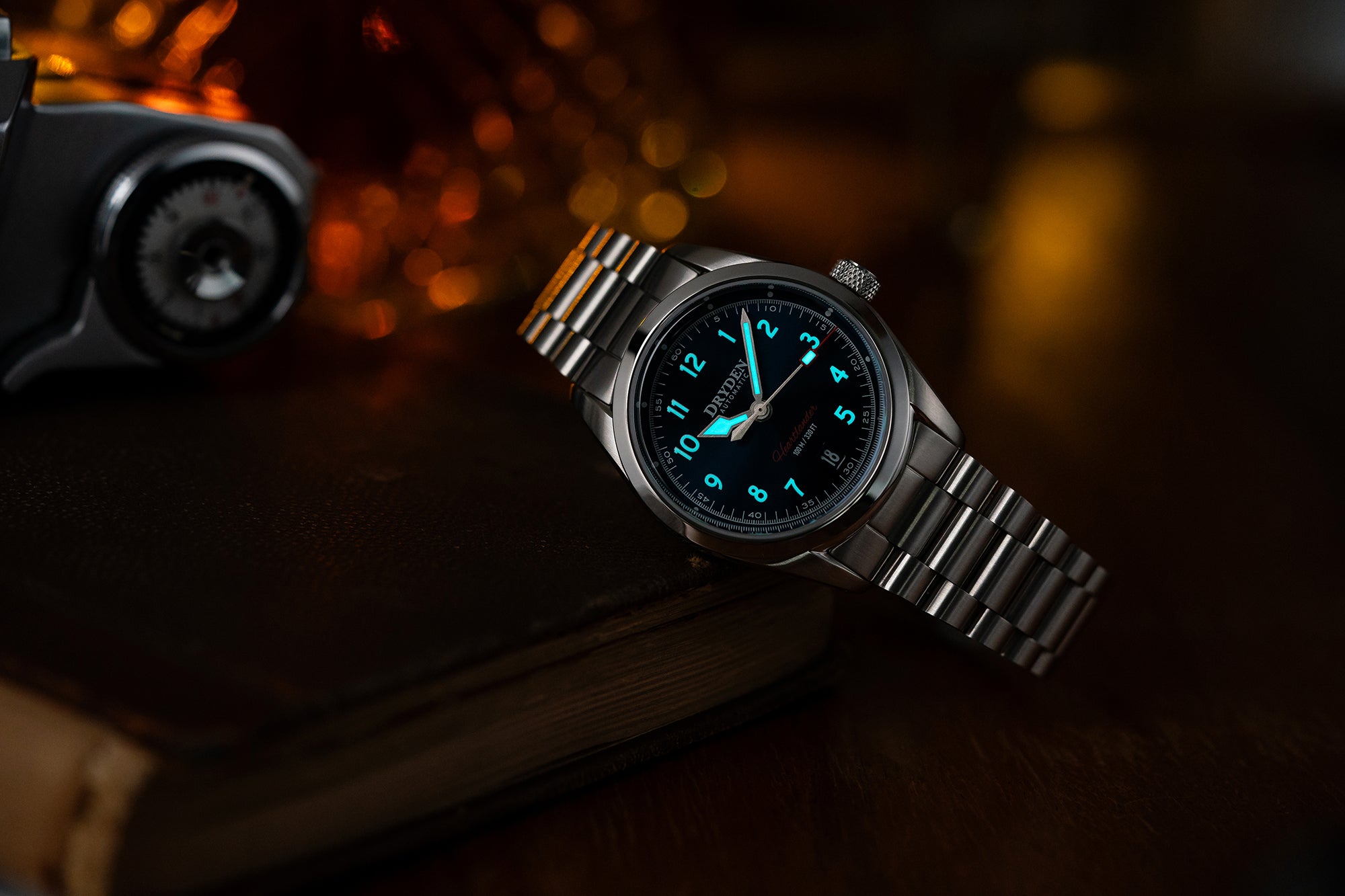
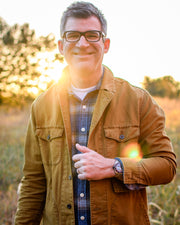
Very interesting article, really enjoyed reading it!
Enjoyed the article and information. I am still a teacher, as is my wife, so budget is part of watches, which are part of life. I seem to remember Steve (at Raven) saying one time that he is more of a watch user than collector. Sounds similar to Chad and myself. Like any other part of my life, I want to enjoy things and use them. If I am not, it is time to give the items away or sell them.
I greatly appreciated the line (pun intended, I assume) about people telling you how to collect not being worth your time. Also a worthy comment about any relationship regarding any hobby.
Great picture and good interview. Thanks for sharing!